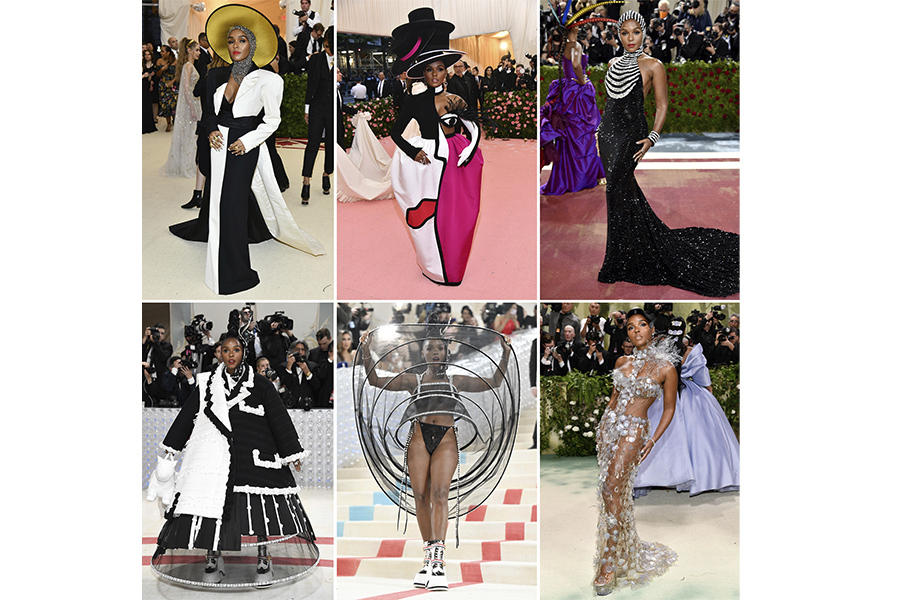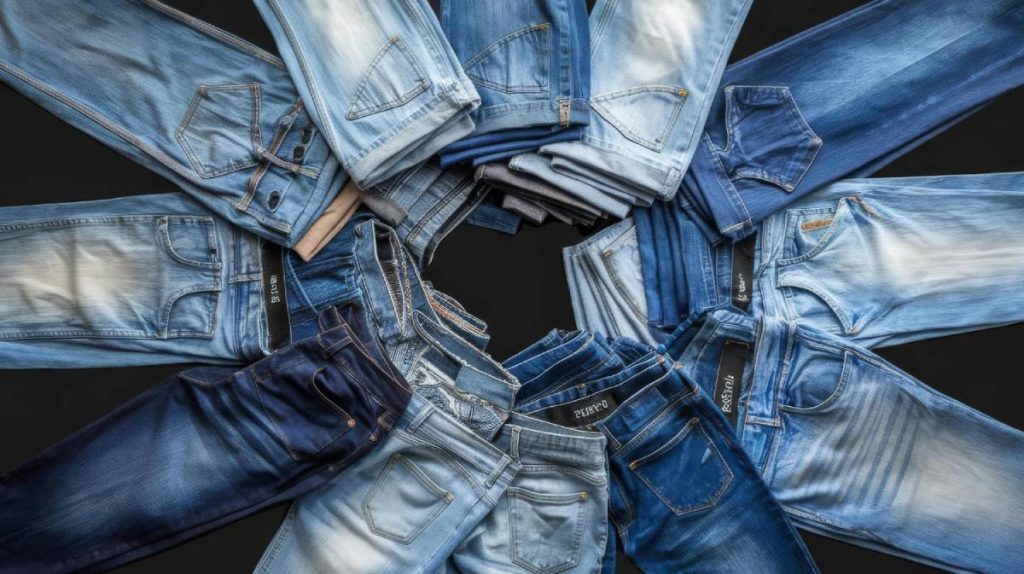Black Dandyism emerges as a vibrant and essential facet of Black fashion history, intricately weaving together notions of identity, self-expression, and cultural reclamation. With the upcoming exhibition Superfine: Tailoring Black Style at the Metropolitan Museum, this form of dandyism in fashion is being elevated, showcasing how Black designers have significantly influenced sartorial aesthetics. The exhibition pays homage to iconic figures like André Leon Talley, whose life and work embody the flamboyance and elegance that define this style. Through a myriad of carefully curated pieces, it highlights how African American style transcends mere clothing, acting as a powerful vehicle for agency and expression. As we explore the depths of Black dandyism, we uncover not just a historical narrative, but a living testament to the resilience and creativity embedded within the Black community.
Exploring the world of fashionable audacity, Black Dandyism often intersects with elements of Black elegance and sartorial boldness. This celebration of Black style casts a spotlight on the artistry of Black designers, illustrating how their contributions to fashion have often gone unrecognized. Through this lens, one can appreciate the layered histories of African American fashion, including its roots in the emotional and political expressions captured in clothing. Alternative expressions of dandyism, showcasing a unique blend of cultural pride and individual flair, reflect a dynamic dialogue between heritage and contemporary style. The upcoming exhibition invites audiences to delve deeper into these concepts, understanding how dandyism serves as both a personal statement and a form of social commentary.
Exploring Black Dandyism: A Cultural Phenomenon
In the realm of fashion, Black dandyism emerges as a vibrant expression of identity, shaped by a history of resistance and cultural reclamation. This exhibition, centered around Black dandyism, illustrates how African American men and women have adopted elegance and flamboyance as a means of asserting agency in a society that often sidelines their contributions. Black dandyism is not merely a style choice; it serves as a political statement, a form of resistance against stereotypes, and a pathway to self-definition. As the exhibition highlights, figures like André Leon Talley embody this movement, demonstrating how personal style can celebrate individual identity while drawing from a rich cultural heritage.
The exploration of Black dandyism within the context of the Superfine exhibition is particularly significant as it links past and present. By curating pieces that span centuries, the exhibition showcases how Black masculinity has used clothing as a vehicle for self-expression. From the 18th-century attire that signified status and respect, to modern threads that fuse streetwear with high fashion, Black dandyism maintains its relevance. In doing so, it invites viewers to consider how fashion can reflect broader narratives of Black history and experience, foreshadowing the discussion on how these elements have been integrated into modern design.
Moreover, Black dandyism interacts intricately with concepts of cultural identity and heritage. Curators have skillfully woven together items that showcase both flamboyant styles and historical garments, creating a tapestry that narrates the evolution of Black fashion. By featuring contemporary designers alongside historical figures, the exhibition illustrates how past influences shape the present landscape of Black fashion. It becomes evident that the celebration of Black dandyism is not solely about aesthetic choices but is imbued with political and cultural significance, representing a reclaiming of narratives that have long been overlooked in mainstream fashion discourses.
The Legacy of Black Designers in Fashion History
Black designers have historically been marginalized in the fashion industry, yet their impact on style and design is undeniable. The Superfine exhibition at the Metropolitan Museum of Art reveals the artistic brilliance and vision of Black creators who have shaped the fashion narrative despite often being sidelined. Showcasing the contributions of designers such as Grace Wales Bonner and Dapper Dan, the exhibition emphasizes the ingenuity and creativity that have emerged from the African American community. By highlighting these influential figures, it aims to challenge the traditional fashion canon and pave the way for a more inclusive future in style.
Additionally, the exhibition serves as a reminder of the socio-political context in which Black designers operate. From the garments created during the civil rights movement to contemporary styles that reflect current cultural moments, fashion has always played a role in the fight for visibility and recognition. The showcasing of historical and modern pieces in this exhibition helps to contextualize the ongoing challenges faced by Black designers in an industry dominated by mainstream narratives. It underscores a need for recognition and celebration of their unique contributions to fashion history and encourages dialogue on what it means to truly include diverse voices in conversations about style.
Dandyism as a Tool for Self-Expression
Dandyism transcends mere sartorial choice; it is a powerful mechanism for self-expression and identity negotiation within the Black community. The exhibition emphasizes how dandyism has historically allowed African Americans to articulate their individuality against a backdrop of societal expectations and constraints. By employing fashion as a mode of expressing identity, Black dandyism has enabled individuals to reclaim their narratives and assert their presence in a world that often seeks to define them narrowly. This dynamic interplay between style and self-definition is paramount in understanding the profound impact of dandyism on personal and collective identity.
Moreover, the innovative fashion showcased in the exhibition highlights how elements of dandyism intersect with various themes of sexuality and cultural heritage. Dapper Dan’s creative repurposing of luxury logos exemplifies how fashion can bridge cultural gaps and serve as a form of resistance. His work not only questions the conventions of high fashion but also celebrates the creativity inherent in Black identity. Consequently, the exhibition positions dandyism as a relevant and evolving narrative, illustrating how it remains a vital expression of Black life, encompassing both historical implications and contemporary significance.
From the 18th Century to Today: A Timeline of Influence
The journey of Black fashion from the 18th century to the present day is a rich narrative filled with creativity, resilience, and adaptability. The Superfine exhibition brings together artifacts that chronicle this evolution, revealing how clothing has served as a form of power and self-expression throughout history. For instance, the inclusion of an exquisite purple velvet garment from an enslaved individual encapsulates the duality of oppression and resilience, marking a poignant reminder of the historical context in which Black style developed. This juxtaposition allows viewers to reflect on how historical fashion laid the groundwork for contemporary trends in Black design.
As we transition into the modern era, the exhibition effectively highlights how Black designers have navigated the fashion landscape, bringing their distinct voice to the forefront. From the opulent designs of the past to the emerging trends we see today, the essence of Black fashion is characterized by its ability to transcend mere aesthetics. This timeline reflects an ongoing dialogue between past and present, demonstrating how Black designers continue to influence the global fashion scene while reclaiming spaces that were historically withheld from them. Ultimately, it serves as a testament to the perseverance and creativity embedded within Black fashion history.
Contemporary Reflections on Black Fashion
Contemporary Black fashion resonates with elements of storytelling, nostalgia, and cultural pride, all of which are fundamental to understanding its significance today. The Superfine exhibition does an exceptional job of curating modern designers whose work reflects the nuances of Black experience. Notable names such as Virgil Abloh and Olivier Rousteing redefine luxury by infusing it with cultural context and relevancy. By showcasing this vibrant creativity, the exhibition spotlights how current designers are not just creators but also cultural commentators, reflecting the challenges and triumphs of their communities through their work.
Furthermore, contemporary Black fashion serves as a platform for dialogues around intersectionality, including race, gender, and sexuality. Designers are increasingly using their art to challenge the status quo, asserting their right to occupy spaces traditionally reserved for others. The exhibition captures the essence of this bold new wave of fashion, where Black voices are not just present but leading conversations about identity and representation. Thus, the modern fashion landscape becomes a canvas for continual cultural expression, one where Black designers redefine aesthetics on their terms, ensuring that their narratives remain front and center.
The Intersection of Fashion and Identity Politics
In examining the interplay between fashion and identity politics, the Superfine exhibition elucidates how clothing serves as a vehicle for expressing complex identities within the Black community. The carefully curated pieces reveal how fashion choices often carry deeper implications, reflecting socio-political realities, cultural heritage, and personal narratives. This understanding facilitates a broader discussion about the role of fashion as a tool for asserting one’s identity—especially for those groups that have historically faced marginalization. Such dynamics are central to dandyism as a concept, which encapsulates the fragility and power of identity negotiation through style.
Moreover, the exhibition underscores how Black designers and artists leverage fashion to engage with pressing social themes. From statements on respectability to explorations of contemporary masculinity, what one wears becomes an extension of one’s voice and agency. The dialogue initiated by the exhibition paves the way for recognition of the intricacies involved in Black identity and the various ways these intricacies can manifest in the world of fashion. By framing these discussions within a gallery context, the exhibition invites a broader audience to consider how we understand identity and representation through the lens of sartorial choices.
Influences of Historical Fashion on Modern Design
The overlap between historical fashion and modern design is evident in the Superfine exhibition, which emphasizes how past styles and narratives continue to influence contemporary designers. The legacy of Black dandyism, along with the sartorial practices of Black historical figures, offers a treasure trove of inspiration that informs today’s creative processes. By showcasing items that reflect both opulence and lived experiences, the exhibition invites designers to build upon these foundations, encouraging them to integrate history into their work. Designers can thus draw on this rich heritage to create pieces that resonate with both authenticity and modernity, bridging the gap between eras.
Furthermore, this synthesis of historical and contemporary influences illustrates how designers can reclaim narratives traditionally marginalized in the fashion world. By recognizing and celebrating the contributions of past Black designers and figures, contemporary fashion becomes a powerful site of resistance against ongoing issues of representation. The exhibition suggests that understanding historical context enables modern designers to make more informed choices, leading to innovative creations that honor the past while engaging with current conversations. This interplay reflects the evolving landscape of Black fashion and its crucial role in shaping cultural identity.
The Role of Fashion Exhibitions in Cultural Critique
Fashion exhibitions, such as the one at the Metropolitan Museum, play a critical role in cultural critique by curating narratives that challenge mainstream perspectives. The Superfine exhibition exemplifies how fashion can be harnessed to address historical injustices, celebrate cultural identity, as well as engage in contemporary social issues. Through the thoughtful display of garments and artifacts, this exhibition not only honors Black designers and their contributions to fashion but also invites dialog about the broader implications of those contributions in the context of cultural heritage and identity politics.
Furthermore, exhibitions like Superfine compel audiences to rethink their understanding of fashion beyond superficial aesthetics. By framing the discussion around Black dandyism and its historical ties, visitors are encouraged to consider how clothing interacts with history and contemporary life. This cultural critique lays bare the often-overlooked contributions of Black designers, advocating for a more inclusive dialogue in fashion. Ultimately, such exhibitions serve as an important reminder that fashion is not merely a reflection of trends but a complex tapestry interwoven with identity, politics, and social change.
Fashion and the Celebration of Black Heritage
The celebration of Black heritage through fashion is a profound theme evidenced in the Superfine exhibition. This initiative seeks to reclaim and spotlight the stories tied to garments, accessories, and styles long overlooked in mainstream fashion discussions. By featuring pieces that signify cultural pride and historical significance, the exhibition underscores how clothing can serve as a powerful vehicle for expressing cultural narratives. From traditional designs that reflect African roots to contemporary styles that blend heritage with modernity, fashion becomes an embodiment of identity and a celebration of cultural heritage.
In parallel, the exhibition weaves together the stories of contemporary designers who are champions of these themes. These creators actively engage with their roots, using their platforms to celebrate their heritage through innovative designs that resonate with younger audiences. By showcasing the versatility and creativity of Black fashion, Superfine invites viewers to appreciate the richness of Black culture and its enduring influence in today’s fashion landscape. It emphasizes that fashion should not only honor history but actively engage with it, allowing for a continuation of these vital narratives.
Frequently Asked Questions
What is Black Dandyism and how does it relate to Black fashion history?
Black Dandyism is a cultural expression and style characterized by meticulously tailored clothing and a commitment to elegance, often used as a means of self-definition and identity negotiation within Black communities. This concept is deeply embedded in Black fashion history, representing how Black men have historically reclaimed agency through their sartorial choices, spanning from the 18th century to contemporary society.
How does the Metropolitan Museum exhibition address Black Dandyism?
The exhibition titled ‘Superfine: Tailoring Black Style’ at the Metropolitan Museum of Art explores Black Dandyism through over 200 artifacts that illustrate its historical and contemporary significance. By analyzing the flamboyant styles alongside deeper cultural interpretations, the exhibition highlights how Black dandyism serves as a reflection of Black identity, agency, and creativity in fashion.
Who are some influential Black designers featured in Black Dandyism discussions?
Prominent Black designers such as Grace Wales Bonner, Olivier Rousteing of Balmain, and Pharrell Williams are highlighted in conversations around Black Dandyism. These designers exemplify the innovative blending of historical references and contemporary style in the context of Black fashion history.
What themes are explored in relation to Black dandyism in fashion?
Themes such as respectability, disguise, and beauty are explored in relation to Black dandyism. The exhibition addresses how Black men have used fashion to assert their identities and navigate societal perceptions, thereby illustrating the complexity of Black masculinity through sartorial expression.
How does dandyism in fashion intersect with Black culture?
Dandyism in fashion intersects with Black culture by serving as a vehicle for self-expression and cultural reclamation. It allows for the exploration of identity, masculinity, and the historical context of Black experiences, emphasizing how clothing has been historically utilized by Black individuals to navigate and challenge societal norms.
What is the significance of the Met’s exhibition on Black Dandyism?
The Met’s exhibition on Black Dandyism is significant as it educates the public on the contributions of Black designers and the critical role fashion plays in expressing Black identity. It challenges the dominant narratives within fashion history, highlighting the nuances and richness of Black sartorial culture.
How does the concept of Black Dandyism reflect political and social themes?
The concept of Black Dandyism reflects political and social themes by showcasing how clothing can function as both a personal statement and a political tool. Dandyism has historically allowed Black individuals to assert their dignity and challenge social hierarchies, making it a powerful form of resistance and self-affirmation.
What can visitors expect to learn about Black fashion history from the exhibition?
Visitors can expect to learn about the multifaceted history of Black fashion, including the evolution of Black Dandyism, and its role in broader societal contexts. The exhibition sheds light on how Black designers and styles have emerged from both oppression and creativity, creating a rich tapestry of identity in fashion.
Can you define the role of Black dandyism in defining Black masculinity?
Black dandyism plays a crucial role in defining Black masculinity by challenging traditional gender norms and presenting a narrative of elegance and individuality. It celebrates flamboyance and boldness, offering a counter-narrative to mainstream perceptions of Black men, and promotes a more nuanced understanding of masculinity in the Black community.
| Key Points | Details |
|---|---|
| Exhibition Title | Superfine: Tailoring Black Style |
| Focus | Exploration of Black dandyism and its relation to Black masculinity |
| Curators | Monica L Miller and Andrew Bolton |
| Historical Context | Highlights the use of fashion as a means of self-expression, agency, and reclamation from historical narratives of the 18th century to the present |
| Inspirational Figures | André Leon Talley and Virgil Abloh |
| Notable Items | Over 200 items showcasing clothing, accessories, and artifacts that reflect Black heritage and expression |
| Thematic Sections | Respectability, Disguise, Cool, Beauty, Heritage, among others |
| Cultural Significance | Addresses intersections with sexuality and gender, and critiques broader fashion discussions |
Summary
Black Dandyism highly influences the contemporary fashion narrative, particularly through exhibitions like Superfine: Tailoring Black Style. This exhibition stands as a testament to the rich complexity and deep-rooted history of Black sartorial expression, revealing how fashion serves not only as a means of personal expression but as a vehicle for social and political identity. Through an exploration of historical and contemporary examples, it emphasizes the importance of Black dandyism in reclaiming narrative and identity while inviting viewers to reflect on the intersectionality involved in fashion and culture.



